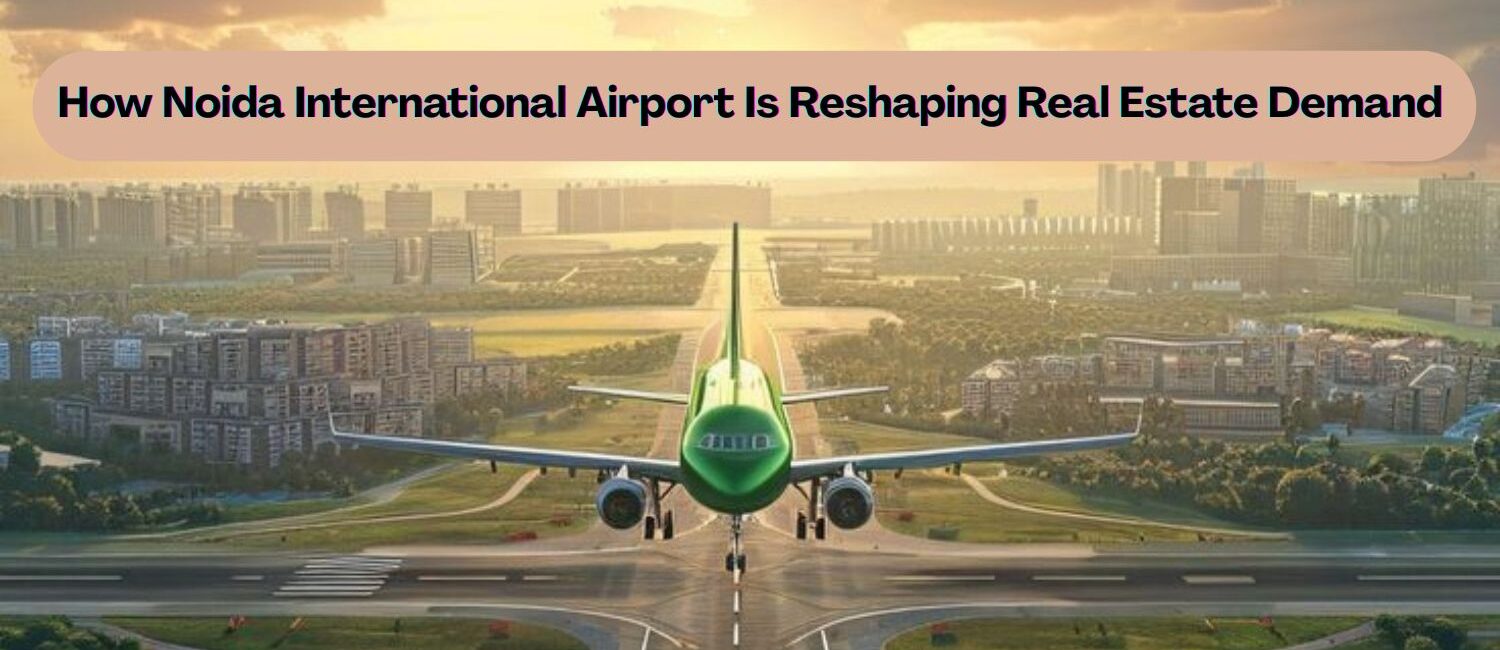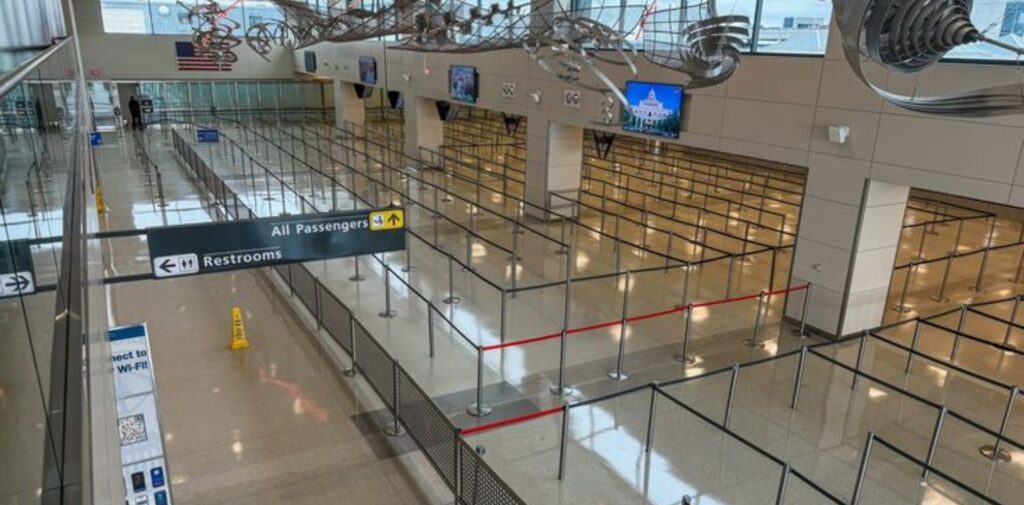
The upcoming Noida International Airport, also known as Jewar Airport, is rapidly becoming one of the most significant infrastructure projects in India. Situated in the Gautam Buddh Nagar district of Uttar Pradesh, this massive project is not only expected to boost connectivity and economic activity but is also reshaping the real estate demand in and around Noida, Greater Noida, and nearby areas. For Indian investors, homebuyers, and developers alike, the airport presents a golden opportunity that could redefine the region’s real estate landscape over the next decade.

New Airport, New Growth Corridors
The Noida International Airport is being developed in multiple phases, with the first phase expected to become operational by the end of 2024 or early 2025. Noida International Airport, once fully developed, it will be the largest airport in India and among the largest in Asia. Naturally, such a transformative project brings immense promise for regional development. The airport has already created new real estate growth corridors, especially in areas like Jewar, Yamuna Expressway, and Tappal. These once-overlooked regions are now in the spotlight, with infrastructure projects like expressways, metro lines, and logistics hubs being planned in their vicinity. This change has triggered a significant rise in demand for both residential and commercial properties.
For developers, this is a signal to begin large-scale planning for affordable housing, townships, and commercial spaces. For buyers and investors, it offers a first-mover advantage to tap into properties that are still reasonably priced. In many ways, the situation resembles what happened in Gurgaon when the Indira Gandhi International Airport saw major expansions. Back then, it transformed the city into a booming real estate hub. A similar wave is now building in the vicinity of Noida International Airport.
Rise in Property Prices and Investment Opportunities
As news about the airport gained traction, real estate prices along the Yamuna Expressway and nearby regions began to rise steadily. What was once considered an underdeveloped or semi-urban stretch is now turning into a high-potential investment zone. Several landowners and farmers in the surrounding villages have already seen a spike in land value. Local authorities have also started receiving a surge in applications for land acquisition and plot registrations.
Investors are particularly eyeing residential plots, commercial plots, and mixed-use developments that could benefit from the future demand. According to recent data, land prices in parts of Jewar have nearly doubled in the last two years. This trend is expected to continue as the airport nears completion. While this growth is driven primarily by infrastructure development, it is also being supported by state government policies that aim to promote industrial zones, data centers, and logistics parks near the airport. The long-term view is clear—this area will become a key hub for business, trade, and tourism, and those who invest now may see significant returns over the next 5–10 years.
Boost to Residential Demand and Urban Planning
With the airport promising increased connectivity to major Indian cities and even global destinations, many professionals and middle-class families are exploring options to settle in nearby locations. The real estate demand is shifting from central Noida to its peripheral zones, particularly near Yamuna Expressway and Sector 150 onwards. Developers have already started launching housing projects focused on affordable and mid-income buyers, offering flats, villas, and gated communities with modern amenities.
The government is also aligning its urban planning to support this upcoming boom. Townships are being designed with sustainable development in mind, including green zones, rainwater harvesting, smart traffic systems, and wider roads. Schools, hospitals, malls, and office spaces are being integrated into new development plans to ensure liveability. As more people move into these upcoming areas, the need for quality infrastructure will rise, further creating job opportunities and secondary business activity. It’s not just about homes; it’s about building a complete urban ecosystem.

Industrial and Commercial Real Estate on the Rise
The airport is also a major driver for industrial development. The UP government’s plans to establish a logistics and warehousing hub around the airport will give a significant boost to the commercial real estate sector. Given India’s rising e-commerce and export-driven economy, such hubs are expected to attract large companies from industries like manufacturing, pharmaceuticals, automobiles, and IT.
Jewar and nearby areas are being promoted as the next industrial belt, with plans to replicate successful models like Manesar in Haryana or Bhiwadi in Rajasthan. The airport provides the strategic advantage of seamless import-export facilities, which will attract businesses that rely heavily on fast transportation and air freight. Startups and MSMEs will also find a conducive environment to grow, thanks to favorable state policies and improved infrastructure. For commercial real estate investors, this creates opportunities to invest in office spaces, co-working hubs, warehouses, and even retail outlets as the area transforms into a commercial powerhouse.
Impact on Employment and Regional Development
Noida International Airport is also expected to create direct and indirect employment for lakhs of people. From construction workers and airport staff to hospitality, logistics, and retail professionals, a wide range of jobs will be generated across sectors. This economic activity will not just uplift Jewar but also positively impact Noida, Greater Noida, Ghaziabad, and parts of western Uttar Pradesh.
As more people migrate to this region for work, it will naturally push the demand for housing, rental properties, and essential services. Local economies will benefit from better income distribution and increased consumer spending. This ripple effect will strengthen the overall real estate market, making it more stable and growth-oriented. In the long run, this will also bridge the gap between urban and rural development in the region.

Cultural and Social Transformation of the Region
Along with economic and real estate growth, the social fabric of the region is also set to change. Traditionally agricultural areas are now witnessing a shift in lifestyle, income levels, and aspirations. Families that once depended solely on farming are now exploring new business avenues—some are turning into land developers, and others are leasing out property or opening businesses to cater to the growing population.
The cultural transformation is visible in the way infrastructure, education, and social amenities are developing. With increased exposure to urban lifestyles and opportunities, people in the area are becoming more aspirational and future-focused. This blend of rural roots and urban growth creates a unique identity for the region, making it attractive not just for business but also for quality living.
Final Thoughts: Noida International Airport Is Reshaping Real Estate Demand
The Noida International Airport is far more than just a transport facility—it’s a catalyst that is driving large-scale transformation in real estate demand across the NCR region. With improved connectivity, affordable property options, industrial development, and government support, it is unlocking the untapped potential of regions like Jewar and Yamuna Expressway. Whether you are a homebuyer, a long-term investor, or a business looking to expand, this could be the right time to consider real estate opportunities in the area.

